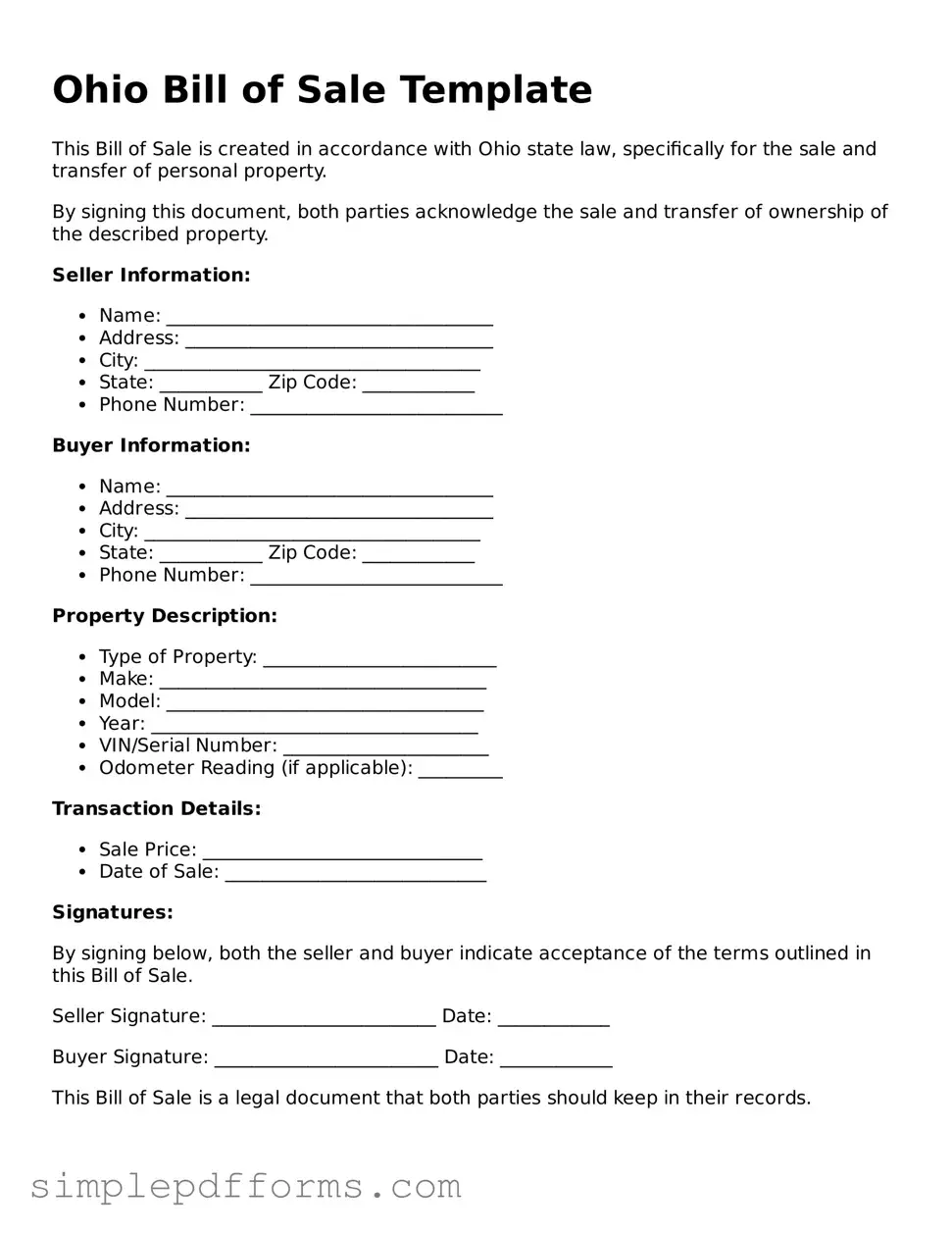Ohio Bill of Sale Template
This Bill of Sale is created in accordance with Ohio state law, specifically for the sale and transfer of personal property.
By signing this document, both parties acknowledge the sale and transfer of ownership of the described property.
Seller Information:
- Name: ___________________________________
- Address: _________________________________
- City: ____________________________________
- State: ___________ Zip Code: ____________
- Phone Number: ___________________________
Buyer Information:
- Name: ___________________________________
- Address: _________________________________
- City: ____________________________________
- State: ___________ Zip Code: ____________
- Phone Number: ___________________________
Property Description:
- Type of Property: _________________________
- Make: ___________________________________
- Model: __________________________________
- Year: ___________________________________
- VIN/Serial Number: ______________________
- Odometer Reading (if applicable): _________
Transaction Details:
- Sale Price: ______________________________
- Date of Sale: ____________________________
Signatures:
By signing below, both the seller and buyer indicate acceptance of the terms outlined in this Bill of Sale.
Seller Signature: ________________________ Date: ____________
Buyer Signature: ________________________ Date: ____________
This Bill of Sale is a legal document that both parties should keep in their records.
